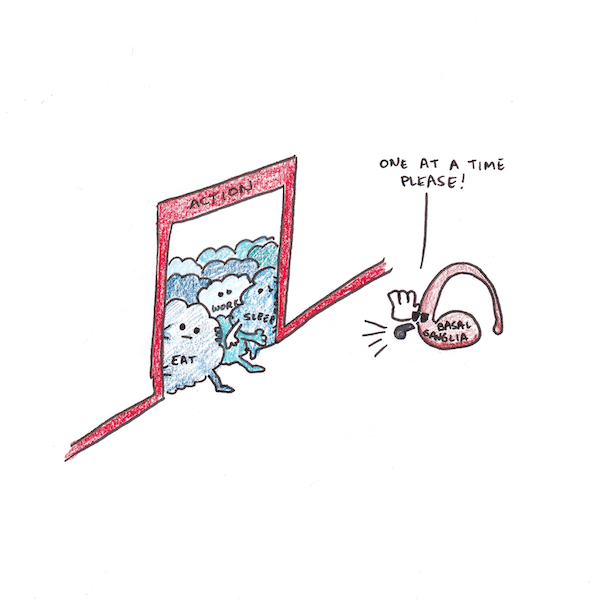The neuroscience of motivation
Neuroscience offers clues on how motivation works within the brain.
- Taking action. The motor loop in the brain enables one-action-at-a-time control. (We can't sit down and stand up at the same time.)
- The dopamine network explains which action we will pick. It signals to the brain which action will bring a reward. It uses that anticipation to guide our thoughts and behaviour.
- Addiction is a motivational disorder. Some drugs act directly upon the motivational circuitry of the brain, and cause the motivation to do something to far exceeds its value.
- Fear and anxiety compel us to do the opposite of motivation. The amygdala is a "threat detection centre" and forces us to suppress and avoid actions when we are anxious.
1K
2.34K reads
CURATED FROM
IDEAS CURATED BY
The idea is part of this collection:
Learn more about personaldevelopment with this collection
How to create a positive work environment
Techniques for cultivating gratitude and mindfulness at work
How to find purpose in your work
Related collections
Similar ideas to The neuroscience of motivation
The importance of neuroscience
Neuroscience affects all human functions, but it also assists in a better understanding of common conditions such as Down syndrome, Autistic spectrum disorders (ASD), ADHD, addiction, brain tumours, immune system disorders like multiple sclerosis, and Parkinson's disease.
...
The Two Roads Of Our Brain
Normally, we utilize the ‘high road’, the main regions of the brain (thoughtfulness and reasoning) before any information reaches the amygdala (region of emotional response).
When a brain reacts due to any kind of threat, the main brain regions are skipped as the ‘low roa...
How motivation works inside the brain
Our brains are parallel computing systems. Billions of neurons and trillions of synapses all fire independently. Yet, we can only take one action at a time. For example, we can't sit and jog at the same time.
The basal ganglia is situated in the brain's neocortex and receive inputs from ma...
Read & Learn
20x Faster
without
deepstash
with
deepstash
with
deepstash
Personalized microlearning
—
100+ Learning Journeys
—
Access to 200,000+ ideas
—
Access to the mobile app
—
Unlimited idea saving
—
—
Unlimited history
—
—
Unlimited listening to ideas
—
—
Downloading & offline access
—
—
Supercharge your mind with one idea per day
Enter your email and spend 1 minute every day to learn something new.
I agree to receive email updates
